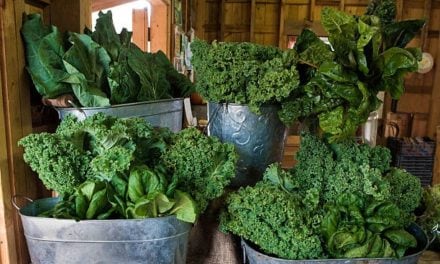This is the story of how I came to stop craving sweets. And bread. And rice. And heaping teaspoons of sugar in my coffee.
Yes, I have become one of those annoying, skinny women who turns down dessert at the end of a meal. Or orders the fruit plate, and says that’s all the sweetness she needs. Really?
That’s the kind of size 0 sister who made the size 12 me inwardly roll my eyes. Who in the hell would choose a fruit plate over pound cake, or a warm, gooey slice of pecan pie? Making that choice is enough for me to have my “real sister” card revoked in some quarters.
Besides, even though I enjoyed the occasional rich dessert, I was a size 8 — not what I would consider overweight. I was happy with me, the way I was. But I would soon learn that I would have to do more than make moderate changes in my lifestyle if I was really going to take charge of the health risks I’d inherited from mom and dad.
The following “real sister” conditions are in the cards that were dealt to me:
- High blood pressure
- High cholesterol
- A strong family history of diabetes.
Still, I thought I had the situation under control. I was exercising – running at least 5 to 7 miles a week. I was certainly not obese, and I had what many would call a healthy diet – skipping most fried foods, dairy products and most sweets – but it was still not enough.
When the doctor gave me the news that my blood glucose level was an A1C test reading of 6.1 (5.7 to 6.4 indicates a high risk of developing diabetes; above that means you’re diabetic), I thought of all of my older relatives who had battled type 2 diabetes. Many of them did not look overweight to me at all. It seemed that in our family, being over 40, like me, was the only thing necessary for diabetes to kick in.
I was being a good girl scout so the news my doctor delivered ran counter the well-meaning advice health advocates trumpet to black Americans:
Black women and men are more likely to suffer from heart disease, high blood pressure and diabetes than the average American. If we would just lose some weight – because we’re fatter than average as well – then we’d get these problems under control, they say.
The subtext seems to be: The reason why you’re in poor health is because you’re too fat and black. Get it together. Maybe that’s an overly sensitive interpretation born of living in a world saturated with negative messages about black bodies. Whatever the intention behind all the warnings, I suspect my initial reaction was a common one: Tune them out.
“That’s not me,” I thought. “I feel fine. Those messages are for people who are actually overweight, or never exercise, or only eat junk food.”

AFTER: “I run 11 to 15 miles a week now, but any kind of exercise that gets your heart going can do the trick – dancing, cycling, step, you name it.”
Rules of Thumb
Turns out, it’s a myth that being overweight and having Type 2 diabetes are inextricably linked. Most overweight people never develop Type 2 diabetes, and many people with the disease are of normal weight or only slightly overweight. Family history, age and being African American (in my case, check, check and check) are also risk factors.
But regardless of why you get it, diabetes is a life-altering disease that can cause blindness, kidney disease, amputations and other maladies. Not worth the slice of pie, in my opinion. And for me it was important to get beyond the sense of being bombarded with negative messages linking my blackness to failing health and bad habits.
Instead, I followed my doctor’s counsel: Cut back the portions, and cut down on the sweets and starches. (In other words, watch your carbs.) Some doctors will recommend following specific meal plans until one gets the hang of a new way of eating; mine believed following certain rules would be more effective for me.
The American Diabetes Association offers advice on managing your health once you a receive a pre-diabetes diagnosis. I now focus on a diet that is high in fiber, vegetables, fruit, lean protein and a small amount of starchy, complex carbohydrates that are high in whole grains, when possible. Within that, I try to weed out or limit foods that are high in glycemic load, which is a measure of how much a particular food will raise your blood sugar level.
I also began to do the following:
- When I ate out, I ordered appetizers and sides instead of entrees (most of which will knock out your entire daily recommended limit of calories, sodium and fat in one plate).
- I also decided to make sure healthy eating options were always at my fingertips to head off temptation. People at work began to tease me about the small sandwich bags of homemade trail mix (nuts and dried fruit) or baby carrots I always carried in my purse. But grazing on them all day helped me to keep my energy up – and blood sugar levels stable – while making it much easier to say no to the red velvet cupcake offered in celebration of a co-worker’s birthday.
A caution here: grazing only works if you exercise portion control – small baggies help — and stick with healthy snacks like fruit, vegetables and nuts. Otherwise, you may end up overeating. And be careful with granola if you’re cutting back on sugar. It can be loaded with it and stimulate the urge to overindulge. I avoid it altogether.
- I stopped heaping teaspoons of sugar into my coffee, and I took it easy on the artificial sweeteners. They may have no calories, but they might fuel the craving for sweets.
- And yes, I did go cold turkey on sweets and opted for fruit instead. Even so-called healthy low-fat or vegan desserts are packed with sugar.
That last tactic wasn’t as hard as it seems, because the funny thing is: the less refined sugar you have, the less you miss it, and the sweeter fruit tastes. Your palate will adjust if you give it some time. Now, when I do have the occasional dessert, it tastes sickly sweet to me.
As for dropping four dress sizes, that wasn’t the goal — just a byproduct of losing all the excess sugar in my diet and getting a handle on portion size.
I don’t believe skinny equals healthy. But healthy can leave you skinny – or at least in good shape — especially if you add exercise to the mix. (I run 11 to 15 miles a week now, but any kind of exercise that gets your heart going can do the trick – dancing, cycling, step, you name it.)
My last A1C reading, early this fall, was a nice, normal 5.3. I have been within normal range for about a year now. I’ve added a few years back to my life expectancy – years I intend to enjoy fully.
Do I think it’s fair that I have to work so hard to stay in good health, perhaps harder than others who were dealt a better hand, health-wise? No. The reasons why I and so many other African Americans are more at risk for diabetes, heart disease and high blood pressure are complex.
But the rewards of living a healthier life are oh-so-sweet.
Sheryl Huggins Salomon, a Brooklyn-based editor and writer, is co-editor of Choosing Health and Wellness: The Nia Guide for Black Women.









